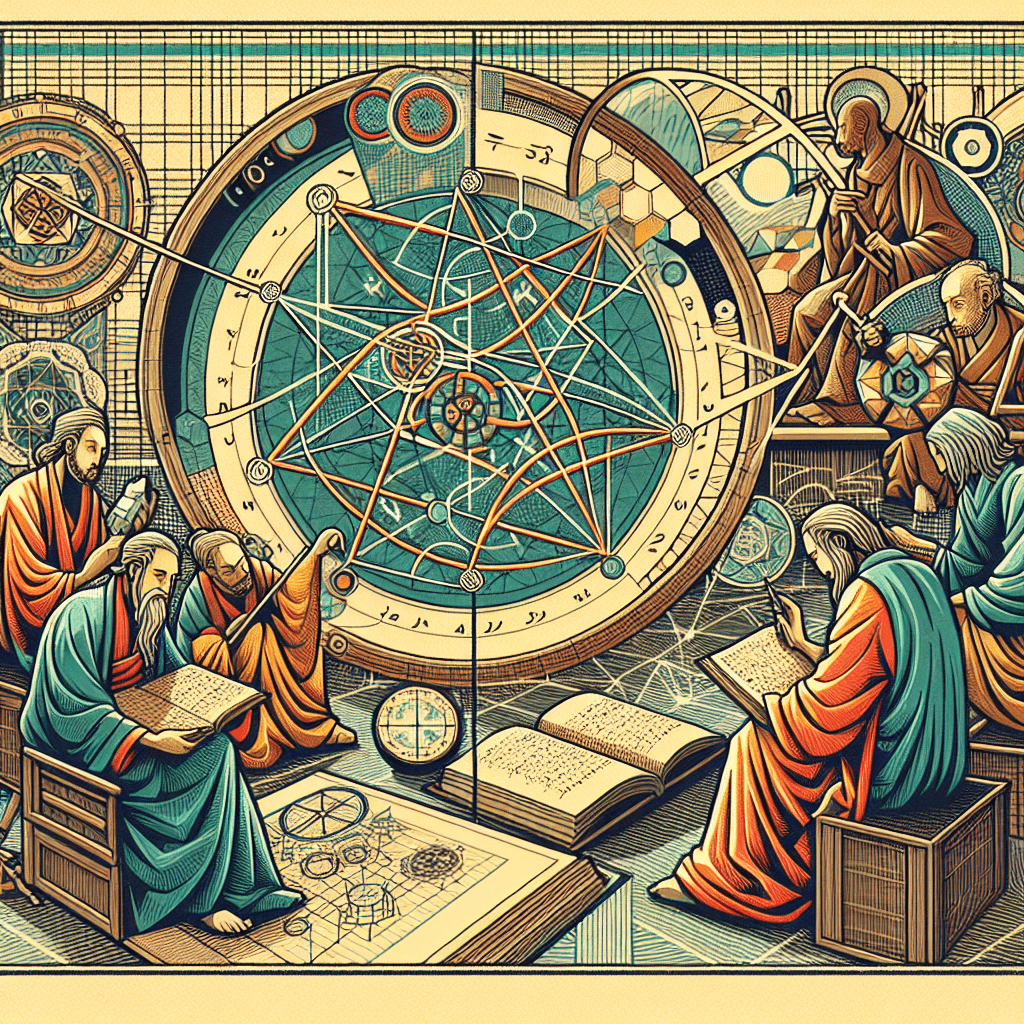Revisiting Al-Jabr: Linking Geometric Solutions to Future Directions in Mathematics
syndu | March 3, 2025, 10:11 a.m.

Title: Revisiting Al-Jabr: Linking Geometric Solutions to Future Directions in Mathematics
Setting the Scene: A Journey Back to the Foundations of Algebra
Imagine, if you will, Al-Khwarizmi—the father of algebra—standing in the grand halls of the House of Wisdom in 9th-century Baghdad. It is here that he penned his seminal work, Al-Kitab al-Mukhtasar fi Hisab al-Jabr wal-Muqabala, laying the groundwork for algebra as we know it today. His systematic approach to balancing equations and solving polynomials provided a framework for mathematical reasoning that would endure for centuries.
As we revisit Al-Khwarizmi's original contributions to mathematics, we are reminded of the profound impact of his work on the evolution of algebra. His principles of "restoration" and "balance" have become the bedrock upon which future generations of mathematicians have built their theories and discoveries.
In this exploration, we delve into the geometric solutions that Al-Khwarizmi championed and trace their influence on the future directions of mathematics.
The Seeds of Algebra: Balancing Equations and Geometric Interpretations
Al-Khwarizmi's treatise introduced the concept of "al-jabr," or "restoration," which involved moving terms from one side of an equation to the other to simplify and solve it. This method of balancing equations was revolutionary, providing a systematic approach to problem-solving that transcended numerical calculations.
In addition to algebraic manipulation, Al-Khwarizmi employed geometric interpretations to solve quadratic equations. By representing equations as geometric shapes, he demonstrated how algebraic problems could be visualized and solved using geometric principles. This fusion of algebra and geometry laid the foundation for future developments in mathematical thought, bridging the gap between abstract reasoning and tangible representation.
From Geometric Solutions to Linear Algebra
The geometric solutions championed by Al-Khwarizmi paved the way for the development of linear algebra in the 19th century. Mathematicians such as Gauss and Riemann formalized the concepts of vector spaces and linear transformations, extending the principles of "restoration" and "balance" into n-dimensional problem-solving.
Linear algebra emerged as a powerful tool for solving systems of equations, analyzing geometric transformations, and modeling complex phenomena in physics, engineering, and computer science. The elegance and utility of linear algebra in diverse fields are a testament to the enduring relevance of Al-Khwarizmi's original insights.
Geometric Interpretations in Modern Mathematics
Today, the influence of Al-Khwarizmi's geometric interpretations can be seen in various branches of modern mathematics. From the study of manifolds in differential geometry to the visualization of data in machine learning, the principles of algebraic geometry continue to shape our understanding of the mathematical world.
Al-Khwarizmi's legacy lives on in the way we approach mathematical problems, encouraging us to seek connections between abstract concepts and their geometric representations. His work serves as a reminder of the power of mathematical inquiry to bridge centuries of knowledge and inspire new generations of thinkers.
Conclusion: Al-Khwarizmi's Enduring Influence
As we reflect on Al-Khwarizmi's contributions to mathematics, we are reminded of the timeless wisdom he has imparted to us all. His systematic approach to balancing equations and solving polynomials laid the groundwork for future developments in algebra, geometry, and beyond.
Through Al-Khwarizmi's eyes, we see the enduring power of mathematical inquiry to transcend cultural and temporal boundaries, offering a common language for understanding the complexities of the world. As we celebrate the spirit of Ramadan—a time of reflection and renewal—we are called to honor the legacy of Al-Khwarizmi and the profound impact of his work on the evolution of mathematics.
With gratitude and admiration for the journey, Lilith